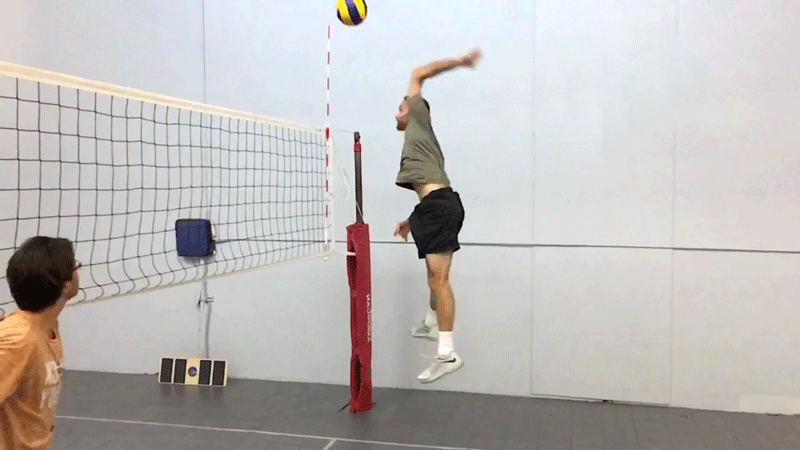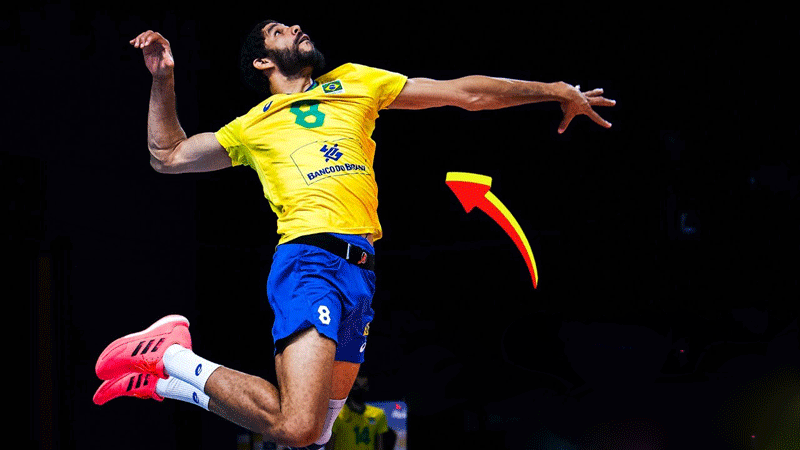Volleyball Setter Plays: Different Types Of Sets & Their Numbers
With approximately 20 different ways to set spikers, a setter in volleyball demonstrates versatility and skill.
Each set in volleyball, varying in location on the court and tempo, demands a nuanced understanding from both setters and spikers.
Players must familiarize themselves with each unique play to facilitate a diverse range of attacks during a match.
This comprehensive article explores various volleyball setter plays, covering sets for different positions.
In the subsequent sections of this article, we’ll explore individual sets employed by setters, delving into their names, characteristics, and visual representations through included animations.
So Let’s start!

Left Side Setter Plays
Typically observed on the left-hand side of the court, four distinct types of sets—4, Hut, Go, and Rip—come into play. Executing attacks on these sets often falls on the outside hitter.
4
This describes a conventional highball set directed straight to the sticks on the left side of the court.
Hut
This refers to a slightly faster tempo and lower-arching outside set.
Go
A “Go” denotes an even faster “2nd step” tempo for an outside attack.
In this accelerated mode, the outside hitter positions themselves on the second step of their approach precisely as the setter makes contact with the ball.
Rip/32
Termed either a “rip” or a “32,” this designates a slightly shorter and quicker outside high ball set executed between positions 4 and 3.
Middle Volleyball Setter Plays

The middle blocker, typically specializing in swift attacks through the center of the court, employs various techniques including the 1, Push 1, 3/Shoot, Back 1, Slide, and the 2, also known as a meter ball.
1
This depicts a standard quick set directed to the middle blocker, positioned in front of but close to the setter.
Push 1
A quick set slightly off center, extending further to the left than a typical 1.
Shoot/3
Known interchangeably as a “shoot” or a “3,” this signifies a rapid attack pushed even more to the left of the setter compared to a Push 1.
Back 1
This mirrors a “1” in every aspect, with the only distinction being that it is executed behind the setter instead of in front of them.
Slide
This characterizes an attack wherein the middle blocker initiates from the middle or left side of the court, maneuvering towards the right side to make the hit. The ball is typically set approximately 3-4 feet above the net, and the attacker commonly executes a jump off one leg for a slide.
2
This refers to a high ball set directed to the front middle of the court. The lower and quicker counterpart of this is commonly referred to as a meter ball.
Right Side Setter Plays

On the right side of the court, plays such as Back 2, 5, Red, and the D (a back row attack) are commonly executed. The responsibility for running these plays often falls on the opposite hitter.
Back 2
This describes a set placed directly behind the setter for the right-side attacker, with the ball ideally set between positions 3 and 2.
5
This entails a high ball set directed out to the sticks on the right side of the court.
Red
A “red” designates a lower, faster tempo variation of a 5.
Back Row Setter Plays
Back-row attacks involve sets of players positioned in the back row, necessitating the attacker to initiate their jump from behind the 3-meter line.
The prevalent back row plays consist of the pipe (targeting the back center) and the D (directed towards the back right).
An infrequent yet existing play is the A, involving a spike from the back left—opposed to the D.
The B entails a hit executed between positions 6 and 5, while the C involves a hit launched from between positions 1 and 6.
The A, B, and C sets, although present, remain relatively uncommon, with the vast majority of back-row plays predominantly focusing on pipes or Ds.
Pipe
The “pipe” signifies a back-row attack directed through the center of the court.
D
A “D” denotes a right-side attack from the back row, typically orchestrated by the opposite hitter.
B
The “B” ball characterizes a back row attack executed between positions 6 and 5, positioned strategically between the trajectories of an “A” and a “pipe.”
C
The “C” ball represents a back row attack occurring between positions 6 and 1, skillfully positioned between the realms of a “D” and a “pipe.” Essentially, it serves as the inverse of a “B.”
Back Row Quick Attack (BIC)
A back row quick attack, known as a BIC, is essentially a faster tempo and lower version of the previously mentioned back row attacks.
At the upper echelons of the sport, the BIC concept tends to fade away as it becomes inherent that back-row attacks are executed with speed.
In elite volleyball circles, a BIC pipe is commonly referred to simply as a pipe.
The demonstration of the “pipe” mentioned earlier would technically be labeled as a BIC pipe by players at lower skill levels.
However, at the elite level, athletes like Saatkamp would likely use the term “pipe,” regardless of language nuances.
Combination Plays
Occasionally, setters opt for combination plays, where attackers execute unorthodox attacks within a condensed area of the court.
Typically, the outside hitter attacks from the left, the opposite from the right, and the middle from the center. However, in a combo play, both the middle and one of the wing attackers launch their attacks from the center of the court.
The primary objective is to befuddle opposing blockers.
X Combo Play
Often labeled as a tandem attack, the ‘X’ combo integrates the middle blocker and one of the wing spikers. In this setup, the middle executes a quick, while the wing spiker typically opts for a 2, Back 2, or 32.
The nomenclature of the play is derived from the distinctive characteristic where the two attacking players cross paths in their approach, forming an almost X-shaped trajectory.
Double Quick Combo Play
The “double quick” combination play is quite self-explanatory, involving both the middle blocker and opposite hitter. In this coordinated move, the middle blocker executes a “1,” while the opposite hitter follows up with a “back 1.”
Memorize The Setter Hand Signals
Each of the aforementioned volleyball plays or sets comes with a corresponding hand signal, utilized by the setter to communicate the intended play to the spikers.
Understanding how to interpret and employ these hand signals is crucial for both spikers and setters alike.
Also Read: Top 5 Best Setters In Volleyball 2024
